Suffering from foraging withdrawal during the colder months? There is a cure and it’s free: The Green Deane Forum. There may be snow on the ground but the conversations are warm and there’s something for every level of forager. We talk about harvesting wild food every day of the year, swapping everything from harvesting tips to recipes to places to find wildedibles. The forum is also a great place to post photos you took of plants you can’t identify. They might be edible or medicinal. Instead of struggling with the internet let our experienced members help you nail down those elusive identifications. You can also read up on food preservation techniques that don’t require you to go out in the cold. To visit or join the Green Deane Forum click on the button above “categories” on the right hand side of this page.
Because Florida is a limestone doorstop under the North American plate it has no rocks. To some that might be a surprise but those who live here it means at least three things: There are no choice stones to skip across ponds, virtually every rock you see was imported, and there’s nothing on hand to smash things when you need too, like Tropical Almonds. They are not related to almonds but the dry pods look like almonds on steroids. There’s also a tasty kernel inside that has the texture of a raw almond but a different flavor. The trees fruited heavily this year and have been dropping pods for several weeks. We ate several this past weekend. I also noticed some were sprouting. To read more about the Tropical Almond go here.
Botany Builder #31: Pendulous, hanging loosely or swinging freely, from the Dead Latin pendo, to hang down. Adjective forms can also be “pensile” and “pendant.” One local edible that has this word form in its name is Melothria Pendula, or the Creeping Cucumber. It has a two-inch or longer stem then a jelly-bean sized little cuke on the end. They are very tasty and edible when light to medium green. Darker colors should be avoided. To read more about the Melothria pendula go here.
EDITORIAL: There are many issues associated with foraging. Among them are where and how much. “Where” has not been a difficult issue in my foraging career: I look for places that have what I think is wholesome soil and water. Uphill from the parking lot and or upwind from the interstate is good. Also fair game is above the level of a parking lot even if irrigated with reclaimed water. And about reclaimed water: It is usually cleaner that the original water taken in. It can be higher in nitrates but that is not a problem with most plants. And if a lawn has weeds it is not being sprayed for them. When it comes to foraging I am eating weeds that nearly no one wants, including the land owner. Weed ownership in practical terms has never been much of an issue. But do realize that with some foragers and land owners eating even a single weed without state’s or land owner’s permission is a serious, heated and often emotional topic. I’ve surreptitiously snatched many a weed off the edge of a suburban lawn, doing them a favor perhaps. I have also gotten land owner permission when I want to roam over several acres.
What has captured the media’s attention of late is not foraging without permission but supposed over-foraging. News being the creature that it is does not find people harvesting wild food too interesting. But over-harvesting — whether actual or not — falls under the environment agenda of the modern media. Thus there have been a spate of unsubstantiated stories that areas are being over forage. It is a case of going from little coverage to poor coverage. While there have been some rumblings for several years over-foraging rose to nation level recently with a story out of California by PBS regarding the harvesting of mushrooms at Salt Point State Park. Much of the story had little to do with over harvesting but rather the increase number of foragers. This leads to guilt by association. Even if you forage in another state you must be doing something harmful and wrong. In truth most instructors teach conservation. But to reporters who know little about foraging any foraging seems to be depleting the environment. Picking mushrooms, however, is like picking apples off a tree. But from such reports one would have gotten the impression that the entire apple tree was being destroyed. More so a reporter can always find someone to provide what ever sound bite they want, which in the business is called “making news.” It does not mean the comment is relevant. It means the comment fits their agenda. If reporters want to find anti-Santa Claus quotes at Christmas they will find them. Relevancy is irrelevant.
It is true that we can’t all forage. That would damage the environment irreparably . But most people don’t want to forage, and couldn’t if they wanted to. It takes specialized knowledge. There is more interest in foraging than a few years ago but that is not all back-to-nature. It is also reflects our economic times and an uncertain future foreshadowed by a dysfunctional Congress. In reality all the foragers in the nation collectively do not do as much harm to the environment as a short stretch of interstate. Besides the material used to build the interstate all those vehicles leave transmission oil, asbestos, lead, grease and paint among other chemicals. That can leach into the land and water. Interstates, however, are not on the mobile media’s environment agenda. Folks who go into the woods are.
From The ETW’s Archives: If you could choose one wild plant to become a commercial product, what would it be? There are many candidates. To read more about them go here.
On the fungal side of foraging the season is far from over. This past weekend in West Palm Beach we were reminded of that with some common poisonous mushroom popping up along with a couple of edible species. Still gracing the grass were False Parasols, the most common source of non-fatal poisonings in North America. They are easy to identify because they are the only mature mushroom that has green spores. So why are they the most common source of non-fatal poisonings? They are harvested too early before characteristics that separate them from a similar edible. On the other side of ledger honey mushrooms were still clustering, mostly on Banyan tree roots. Honeys are somewhat controversial. One expert, Roger Phillips, calls the species inedible. James Kimbrough says it is choice. Most people like them. Also seen was a tough little edible you can find all year, Polyporus tenuiculus. It doesn’t have a common name, or at least not in English. Several of these honeycomb fungi were inhabiting a log in a preserve in Ft. Pierce. I would add this find was during a very heavy downpour. To that point if you like to look for mushrooms for any reason starting today and the rest of the week will be a good time to do so because of the rains this past weekend. As mushrooms are nearly all water rains help prompt them to pop up. To help you identify them I also have two facebook pages related to identifying mushrooms: Southeastern US Mushroom Identification, and Florida Mushroom Identification Forum. I also have the page Edible Mushrooms: Florida.
You’ve read in these newsletters about an $18 million heist of maple syrup in Canada then of 152,000 pounds of walnuts being taken in California (worth half a million.) That’s prime ingredients for maple walnut ice cream. That’s when we wrote: If we read about 1,000 pounds of chocolate topping being stolen we know the world’s largest sundae is being concocted. Well… the search is on for a missing refrigeration truck that was carrying $120,000 worth of Hershey’s chocolate. It was parked at a truck center in Deland, Fl., not 30 miles from here on Sunday… stop thinking that… I was 150 miles away on Amelia Island at the time… I got witnesses.
Though your foraging may drop off during the winter it’s a great time to study wild edibles with my nine DVD set. Each DVDs has 15 videos for 135 in all. Some of these videos are of better quality than my free ones on the Internet. They are the same videos but many people like to have their own copy. Sets of the DVDs have been sent all over the world, Europe to Australia. I burn and compile the sets myself so if you have any issues I handle them personally. And I’m working on adding a tenth DVD. To learn more about the DVDs or to order them click here.
Upcoming classes: Saturday, December 21st, Mead Garden, 1500 S. Denning Dr., Winter Park, FL 32789, 9 a.m.; Sunday, December 22nd, Seminole Wekiva Trail, Jones Trailhead parking lot at the intersection of Markham Woods Road and Long Pond Road. Longwood, FL., 32779, 9 a.m.; Saturday, December 28th, Red Bug Slough Preserve, 5200 S. Beneva Road, Sarasota, FL, 34233. 9 a.m.; Sunday, December 29th, Bayshore Live Oak Park, 23020 Bayshore Rd., Port Charlotte, FL 33980, 9 a.m.; Sunday, January 5th, John Chestnut State Park: 2200 East Lake Road, Palm Harbor, FL 34685. 9 a.m.
Because there are five Tuesdays this month there will be no newsletter December 31st. And this Friday, December 20th, will be my third free Urban Crawl, a foraging class held in downtown Winter Park. We meet at 10 a.m. in front of Panera’s, 329 N. Park Avenue (that’s on the north end of Park Avenue, NOT the south end.) There is free parking west of Panera’s in the parking garage, levels four and five. We wander around Winter Park stopping at about 2/3 the way for coffee and a bathroom break a the Winter Park Library. We’re usually done by 1 p.m. or so.
To donate to the Green Deane Newsletter or Website click here.

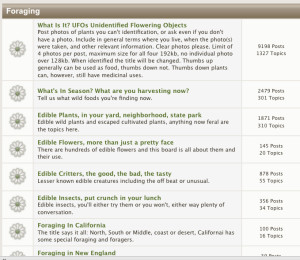
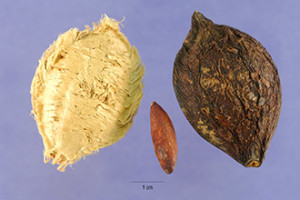
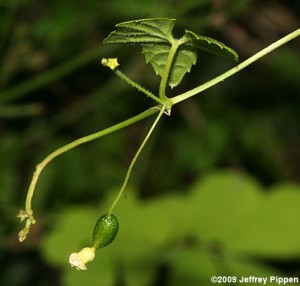

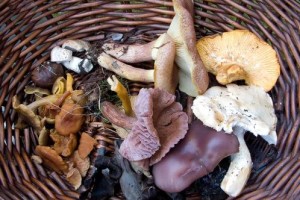
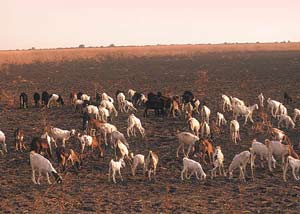
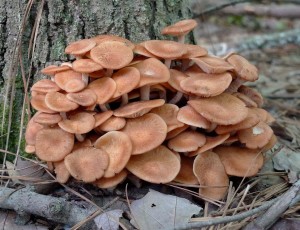
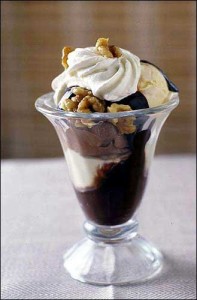
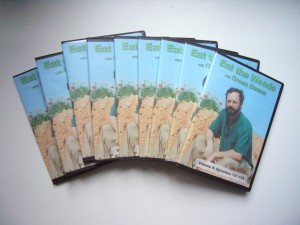
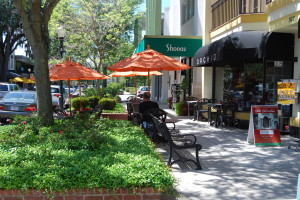

Yes, over-foraging can be a serious problem. The ramps in my neck of the woods were all gone in the spring of 2013. I saw no growth in the summer, so I don’t expect them back this coming spring. Folks (or maybe just one person) just cleared them out. I had harvested them for years.
It’s a thin line: We want foraging to be appreciated, and we cherish articles in the popular press (such as articles on ramps in the Baltimore Sun and Washington Post). Yet the downside is that there’s more competition, often from new people who haven’t yet developed an understanding of what and how much to harvest.
this was my very first news letter from you! I enjoyed it very much.
I am in the woods a lot, either hunting, fishing, or running a trap line.
I pick things i know are edible but I would love to learn more.
I made another post on this site earlier mentioning this, but my thoughts about over foraging is, why not just collect seeds from your favorite wild edibles, and start a permaculture garden, using the amount that you feel you may want to consume that season. This way, you aren’t depleting the wild resources. All one has to do is create a micro climate, or growing conditions the plant likes. While collecting these wild seeds, only take a few, and even go as far as to help the other seeds get into the ground where they will have a better chance.
An example is, most oak trees that sprout are really acorns that a squirrel buried, and forgot about. Or did he really forget? Who’s to say he didn’t bury more than he needed? That’s a great example of that squirrel planning his future. If these acorns did not get buried, deer and other wild life would consume them.
We can never stop learning from nature. It’s humbling. And although I can’t find anyone around my area that is interested in such things, I thank god and “this site” for bringing me in contact with people who are interested.
My problem is with mushroom hunters who disturb the duft and soil while collecting. Shoving the leaves and logs around destroys the mycelium which is the same as destroying the apple tree in order to pick an apple.
Whether foraging for veg’s or for mushrooms a good rule of thumb is to leave some of the specimens behind so they can reproduce OR take only what you will eat for dinner and skip the left-overs; particularly if you are in a high-traffic foraging area.
Thank you for the explanation of “Pendulous” as illustrated by Melothria pendula. I liked very much the picture of the grazing goats leading to “No Environment”. In Sudan , lack of the consequences of intensive grazing of goats, cattle and camels by shepards of various tribes as well as the absence of follow up by the authority have resulted in degrading large areas of once useful land. By the way I’ve e-mailed you two comments before: one on issue 3 Dec2013 & the other on issur 10 Dec2013. One of them has not yet appeared. I hope this recent one will be accepted.
I posted them both.